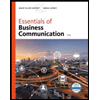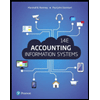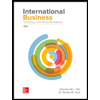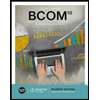D079 Task 1 Final
.docx
keyboard_arrow_up
School
Western Governors University *
*We aren’t endorsed by this school
Course
079
Subject
Business
Date
Jan 9, 2024
Type
docx
Pages
3
Uploaded by rballey323901 on coursehero.com
Name: Richard Blake Alley
Student ID (STUID): 002004939
Task 1: Project Management
A. Discuss how you would plan the catered lunch project by completing each of the following 5 distinct project management phases: 1. Project Initiation a
. (A1A)
In the situation presented, I am the proprietor of a small organic food market in my hometown. I decided to start a catering project for various reasons, including the need to meet the growing demand for organic catering and expand my existing business. In honor of our 10-year anniversary, we are launching this initiative, which will serve clients within a 25-mile radius of the market. It is anticipated that the initiative will provide lunch delivery within 60 minutes but that catering events will take a week or more to complete all of the orders.
b.
(A1B)
There are three parties involved in this project: the owner, the farmers in the area, and the end-users (customers). The financial ramifications of the project's success or failure are felt by both the landowner and the farmer involved. The catering service might be highly profitable for them if it
is a success, but it could be highly costly if it fails. According to whether the project is successful or unsuccessful, the customers would be influenced as well. The successful completion of the project will provide them with the much-needed fresh organic food delivery and catering service that they seek. If the project does not succeed, they will not be eligible for this service.
c
. (A1C)
There are already concerns about the high expense of the free lunches, which is already causing
concern. In addition, there is a difficulty with the product because the local farmer cannot supply it. A lunch delivery service within a 25-mile radius of the customer's location is provided within 60 minutes under the terms of this service. There is just not enough time to prepare the dinner and deliver it to the diner within that time frame, according to my estimations. The existing plan does not appear to be workable.
2. Project Planning a.
(A2A) Milestone 1, Week 1:
Distribute marketing materials to increase interest among customers within a 25-
mile radius of the location. Miles should be plotted to ensure that this is doable to deliver within 60 minutes. Make any necessary revisions to the service guarantee's time or mileage limits. Milestone 2, Week 2:
Ensure that the organic items promised are available and that the menu is adjusted to reflect the availability of the organic products. Milestone 3, Week 3:
Calculate the cost of the free lunch initiative and make necessary adjustments to ensure that it stays within the $7000.00 allocated cost limit.
b
. (A2B)
Specific:
Reduce the cost of products and services by 10% by reducing the amount of food served at each meal and by reducing the number of miles traveled for delivery to 20 or less.
Measurable:
Calculate the cost savings associated with using less goods and less transportation.
Achievable:
Acquire smaller packaging to fit the reduction in the amount of food supplied.
Relevant:
The food that would be provided would be intended to be prepared quickly and transported effortlessly.
Time:
By three weeks, we will have a strategy in place for the menu items and transportation.
c.
(A2C)
Risk 1:
Because of a scheduling conflict, the local farmer has informed us that he will not offer the lettuce for the salads as initially anticipated this week.
Solution 1:
You might take various approaches to mitigate this danger. One way is to have a few backup
farmers from neighboring counties lined up ahead of time to take advantage of any crop shortages that may occur. To begin with, you provide an alternative to the salad, such as steamed vegetables or fresh fruit as an addition to the meal.
Risk 2:
The initiative provides a lunch delivery service within a 25-mile radius of the project's headquarters within 60 minutes of placing an order. Driving 25 miles would take an average of at least 30 minutes on a good day. This would only leave 30 minutes for prepping the meal and cleaning up afterwards.
Solution 2:
Preparing all of the meal ingredients the night before and having them ready to cook in the morning will save time during the day.
3. Project Execution a
. (A3A)
The promotion plan, which included providing a free catered luncheon to the first ten companies who signed up for the catering service, had already exceeded the budgeted amount by a factor of 10 percent. You would have to reduce your expenses. You could do this by reducing the number of people who are eligible to attend the complimentary luncheon from 30 to 25 participants.
b.
(A3B)
After receiving notification from the farmer, it has been determined that the salad ingredients will not be ready and available for the free luncheon. The remedy to this is to have a line of replacement farmers ready to go before the event.
4. Project Monitoring and Control a
. (A4A)
. The costs of using another lettuce farmer would be more than they would have been if the original plan had been followed. It would be necessary to reevaluate the budget in order to find ways to minimize costs in another area. It is possible that the entire scope of the project will be negatively impacted if there are no other farmers who are able to offer the produce required within the time frame specified. It would be necessary to extend the scheduled launch date from 30 days to 45 days. This would have a significant impact on the scope and budgeting of the entire endeavor.
2
Your preview ends here
Eager to read complete document? Join bartleby learn and gain access to the full version
- Access to all documents
- Unlimited textbook solutions
- 24/7 expert homework help
Related Questions
Using the information in Table-1, assuming that the project team will work a standard working week (5 working days in 1 week) and that all tasks will start as soon as possible:
Task
Description
Duration (WorkingDays)
Predecessor/s
A
Requirement Analysis
5
B
Systems Design
15
A
C
Programming
25
B
D
telecoms
15
B
E
Hardware Installation
30
B
F
Integration
10
C, D
G
System Testing
10
E, F
H
Training/Support
5
G
I
Handover and Go-Live
5
H
(i) Determine the critical path of the project
(ii) Calculate the planned duration of the project in weeks
(iii) Identify any non-critical tasks and the float (free slack) on each.
arrow_forward
To be able to meet delivery dates, a project consultant intimates that a project should be analyzed with activities as follows:
ACTIVITY IMMEDIATE PREDECESSOR EXPECT DURATION (WEEKS)
A. Initial discussion
none
3
B. product design
none
5
C. Market survey
B
3
D. market evaluation
A,C
4
E. product costing
D
8
F. sales plan
C
2
G. product pricing
F
4
H. prototype
F
2
I. master inform
B
5
J.prototype testing
HEG
3
(i) Draw a network to represent the various activities of the project.(ii) Draw up a table showing for each activity, the earliest and latest start and finish times and total float/slack.(iii) Determine the critical path and project duration.(iv) As a management science student, advise the management about the effect on the project completion time If the start time of activity A is delayed by 3weeks, activity G is delayed by 8 weeks
arrow_forward
SECTION C - SHORT ANSWER QUESTIONS 1. How would you define a project? 2. Give an example of a project found in Botswana, and provide a brief description of its primary goals. 3. Briefly describe a project you know that failed in Botswana. Which of the reasons considered in the course could be responsible for the project’s failure?
4. Explain:
a) a project plan b) a project charter c) Work Breakdown structure
arrow_forward
Define a process in project management with the help of an example?
arrow_forward
I just need help with D AND E Please!! The answer that i have for D was wrong and cant figure it out.
You may need to use the appropriate technology to answer this question.
Mueller & Associates is a urban planning firm that is designing a new public park in an Omaha suburb. Coordination of the architect and subcontractors will require a major effort to meet the 43-week completion date requested by the owner. The Mueller project manager prepared the following project network.
A project network with 10 activities and 14 directed arcs is shown.
Activity Start is connected to activity A.
Activity A is connected to activity B, to activity C, and to activity D.
Activity B is connected to activity F.
Activity C is connected to activity E and to activity F.
Activity D is connected to activity E.
Activity E is connected to activity G and to activity Finish.
Activity F is connected to activity G and to activity H.
Activity G is connected to activity H.
Activity H is connected to…
arrow_forward
2. Describe Project Management.
Shorts and simple
###########################correct answers from experts.
arrow_forward
a. Develop an AON network for this problem.
b. What is the critical path?
c. What is the total project completion time?
d. What is the slack time for each individual activity?
Discussion Question
e. Why do you think project management is needed in this scenario?
arrow_forward
With the use of examples, can you explain the working of the triple constraints of project management
arrow_forward
Problem 2: Chicago Project
You are asked to manage an upcoming project for a client based in Chicago. Your supervisor, Susan, asked you to determine if the project will be completed in 2 months (60 days). Susan sent you the estimated time durations (in days) for the project. The information is given below:
4. Your supervisor was told that the client would like to complete the project in 56 days. Which path in the project network has the greatest risk of running over this new deadline of 56 days?
5. Prepare a report for Susan regarding your findings. Include your recommended strategy to finish the project in the least possible time.
arrow_forward
a. Draw a project network.
b. What is the critical path?
c. What is the normal project cost?
d. What is the total cost of the project if you need to crash it by 1 week?
arrow_forward
IT Project Management IT 270 on your project scenario that has been suggested by you or by your instructor and approved by your instructor, answer the following questions. Project Title: Scenario Overview: a) Create the charter for your own project.b) Develop the SWOT analysis for your own project. Use any of project management tools to,a) Identify the project milestones and draw Gantt chart.b) Draw PDM network diagram.c) Identify all paths including the critical path for the project.d) Show the forward pass and the backward pass of your project.e) Calculate the free and total slack of each activity.f) Use the Earned Value Management for your project to find out CPI, SPI, and ECg) In one page, create the Lessons-Learned report.
arrow_forward
1. Analyze the cost variance metric, and include the equation and what the acronyms stand for.
1. Describe one project software program that could help a project manager control costs.
arrow_forward
why the understanding of the triple constraints of project management is useful to a project manager.
arrow_forward
The project manager of Good Public Relations gathered the data shown in Table 7.15 for a new advertising campaign.a. How long is the project likely to take?b. What is the probability that the project will take more than 38 weeks?c. Consider the path A–E–G–H–J. What is the probability that this path will exceed 38 weeks?
arrow_forward
1. Using the information in this section, write a project
plan for NIBCO.
2. Why is change management so important for
NIBCO?
3. Use the WBS and start a project plan using Microsoft
Project.
Write a rationale for each of the cost summary
arrow_forward
The Scott Corey accounting firm is installing a new computer system. Several things must be done to make sure the system works properly before all the accounts are put into the new system. The following table provides information about this project. How long will it take to install the system? What is the critical path?
Activity
Immediate Predecessor(s)
Time (weeks)
A
3
B
4
C
A
6
D
B
3
E
A
5
F
C
2
G
D,E
5
H
F,G
5
The managing partner of the Scott Corey accounting firm has decided that the system must be up and running in 16 weeks. Consequently, information about crashing the project was put together and is shown in the following table:
Activity
Immediate Predecessor(s)
Normal Time (weeks)
Crash Time (weeks)
Normal Cost ($)
Crash Cost ($)
A
3
2
8,000
9,300
B
4
3
9,000
10,000
C
A
6
4
12,000
15,000
D
B
3
1
15,000
15,500
E
A
5
3
5,000…
arrow_forward
Draw a network representation of the project (nodes = activities, arrows = precedence constraints). Provide early start/early finish as well as late start/late finish times for all activities.
What is the duration of the project, and which tasks are on the critical path?
Task
Description
Duration
Predecessors
A
Project Planning
16 days
-
B
Evaluation Existing Apps
20 days
-
C
Define Value Proposition
12 days
B
D
Define User Interface
18 days
B
E
Define Technology Requirements
22 days
C and D
F
Document Requirements
14 days
E
G
Develop Architecture
35 days
A and F
H
Creation Code Design
18 days
G
I
Roadmap Feature Development
12 days
G
J
User Interface Development
74 days
H and I
K
Code Development
92 days
H and I
L
Release Testing
32 days
J and K
M
Get User Feedback
22 days
L
N
Bug Fixing
28 days
L
O
Marketing Plan
54 days
E
P
Release Product
5 days
M, N and O
arrow_forward
Project Managent
4. Discuss in detail the Project Life Cycle for a typical project explaining each cycle. Use examples/diagrams to illustrate your answer.
arrow_forward
Describe approach to tracking a project. What kinds of issues would you focus on if you were a project manager? Why?
arrow_forward
Using the following table, calculate the project duration
Task
Predecessor
Duration (weeks)
A
-
1
B
A
2
C
-
2
D
-
3
E
B
3
F
C, D
4
G
E,F
6
H
F
1
arrow_forward
List and describe 3 tools out there that can be used for managing projects on a task level similar to Microsoft Project. State what your preference is and why?
arrow_forward
1)List and explain the phases that mark the life of a project.
2) For each project phase identified in 1(a) above, describe at least four (4) project activities/processes performed in the phase.
3) With the use of a diagram, show (illustrate) the typical levels of uncertainty or project risks associated with each phase and throughout a project.
4) With the use of a diagram, show (illustrate) the typical levels of project staffing related to each phase and throughout a project.
5) For each project phase identified in 1(a) above, identify and describe at least one (1) major deliverable (output) of the phase.
arrow_forward
1. Determine and provide the following information for Activity 1: Latest Finish Duration Latest Start Start date.2. Explain what does negative 8 (‐8) say about the project
arrow_forward
Solve the following project by hand and submit your notes:
Activity
Normal Time (weeks)
Crash Time
(weeks)
Normal Cost
Crash Cost
Immediate Predecessor
A
4
3
$2,000
$2,100
-
B
2
1
$2,200
$2,800
-
C
3
3
$500
$500
-
D
8
6
$2,300
$2,600
A
E
6
3
$900
$1,200
B
F
3
2
$3,000
$4,200
C
G
4
2
$1,400
$2,000
E, F
How long will the project take?
What is the total cost to complete the project in normal time?
If the project is to be shortened by 1-week, which activity will be reduced and how much will the cost be increased?
What is the maximum time that the project can be crashed? How much will the cost increase if it is crashed the maximum?
arrow_forward
Project C is a small (about GHS 2 million in value) but complex project that has as its purpose the development of a new computer-basedmanagement system and is highly complex in nature. It has a number of small interrelated sub-systems that are mutually dependent and does not have a well-defined direction. It is currently about 40 per cent complete. This project is being developed by staff of your organization, with the assistance of specialist contractors as required. Differences between the development staff and organizational management about the direction that the project should take threaten, however, to impact on its successful delivery. Similarly, requests by organizational management for scope change are numerous, and change control procedures are poor. To date, the project manager has successfully managed to manage requests. This may not always be the case. If the new system achieves its desired goals, the organization would be expected to achieve considerable productivity…
arrow_forward
Identify at least four (4) critical issues that the project management team faced inexecuting, monitoring, and controlling project work and discuss the strategies used toeffectively manage these issues. The project is the Demolition of an old Building in the City.
arrow_forward
With the data attached:
1. Draw a project network.
2. What is the critical path
3. What is the normal project cost?
4. What would be the total cost of this project if need to crash it by 1 week?
arrow_forward
Dave Fletcher was able to determine the activity times for constructing his laser scanning machine. Fletcher would like to determine ES, EF, LS, LF, and slack for each activity. The total project completion time and the critical path should also be determined. Here are the activity times:
Activity
Time (weeks)
Immediate Predecessor(s)
Activity
Time (weeks)
Immediate Predecessor(s)
A
7
−
E
4
B
B
6
−
F
5
B
C
4
A
G
10
C, E
D
2
A
H
8
D , F
Part 2
Dave's earliest start (ES) and earliest finish (EF) are:
Part 3
Part 4
Part 5
Part 6
Part 7
Part 8
Part 9
Part 10
Dave's latest start (LS) and latest finish (LF) are:…
arrow_forward
Given the project activity table below: (check images)
a) Draw a project network from the table
b)
What activity(s) is a burst activity?
What activity(s) is a merge activity?
3. What is the length of the project?
4. What is the critical path?
c) Make the Gantt chart
d) Build the project network using expected activity times based on the new table below (I WROTE "2nd CHART" on it)
e) What would be the expected length of the project?
f) What would be the project standard deviation?
g) Using a z-table (one can be found here: https://statisticsbyjim.com/hypothesis-testing/z-table/ ), what is the probability that the project can be completed in 28 weeks?
arrow_forward
The Virginia Department of Transportation is undertaking aconstruction project to widen a large section of interstate,
highway near Washington, DC, which includes the construc-tion of a number of new bridges, interchanges, and over-passes. The first step in the project is the appointment of a
project manger and the development of a project team, someof which will be departmental employees and others will beprivate consultants and operatives. The team for a project thissize also requires a large support staff with varying technicalskills. Once the team is selected and the staff is in place the
first task is to select a primary contractor to manage and over-see the actual construction. The following activities are stan-dard for the planning and scheduling of this process:
Construct the CPM/PERT network for this project and de-termine the project schedule. Identify the critical path and
determine the expected project duration time and variance.Determine the probability that the team and…
arrow_forward
SEE MORE QUESTIONS
Recommended textbooks for you

BUSN 11 Introduction to Business Student Edition
Business
ISBN:9781337407137
Author:Kelly
Publisher:Cengage Learning

Essentials of Business Communication (MindTap Cou...
Business
ISBN:9781337386494
Author:Mary Ellen Guffey, Dana Loewy
Publisher:Cengage Learning

Accounting Information Systems (14th Edition)
Business
ISBN:9780134474021
Author:Marshall B. Romney, Paul J. Steinbart
Publisher:PEARSON


International Business: Competing in the Global M...
Business
ISBN:9781259929441
Author:Charles W. L. Hill Dr, G. Tomas M. Hult
Publisher:McGraw-Hill Education

Related Questions
- Using the information in Table-1, assuming that the project team will work a standard working week (5 working days in 1 week) and that all tasks will start as soon as possible: Task Description Duration (WorkingDays) Predecessor/s A Requirement Analysis 5 B Systems Design 15 A C Programming 25 B D telecoms 15 B E Hardware Installation 30 B F Integration 10 C, D G System Testing 10 E, F H Training/Support 5 G I Handover and Go-Live 5 H (i) Determine the critical path of the project (ii) Calculate the planned duration of the project in weeks (iii) Identify any non-critical tasks and the float (free slack) on each.arrow_forwardTo be able to meet delivery dates, a project consultant intimates that a project should be analyzed with activities as follows: ACTIVITY IMMEDIATE PREDECESSOR EXPECT DURATION (WEEKS) A. Initial discussion none 3 B. product design none 5 C. Market survey B 3 D. market evaluation A,C 4 E. product costing D 8 F. sales plan C 2 G. product pricing F 4 H. prototype F 2 I. master inform B 5 J.prototype testing HEG 3 (i) Draw a network to represent the various activities of the project.(ii) Draw up a table showing for each activity, the earliest and latest start and finish times and total float/slack.(iii) Determine the critical path and project duration.(iv) As a management science student, advise the management about the effect on the project completion time If the start time of activity A is delayed by 3weeks, activity G is delayed by 8 weeksarrow_forwardSECTION C - SHORT ANSWER QUESTIONS 1. How would you define a project? 2. Give an example of a project found in Botswana, and provide a brief description of its primary goals. 3. Briefly describe a project you know that failed in Botswana. Which of the reasons considered in the course could be responsible for the project’s failure? 4. Explain: a) a project plan b) a project charter c) Work Breakdown structurearrow_forward
- Define a process in project management with the help of an example?arrow_forwardI just need help with D AND E Please!! The answer that i have for D was wrong and cant figure it out. You may need to use the appropriate technology to answer this question. Mueller & Associates is a urban planning firm that is designing a new public park in an Omaha suburb. Coordination of the architect and subcontractors will require a major effort to meet the 43-week completion date requested by the owner. The Mueller project manager prepared the following project network. A project network with 10 activities and 14 directed arcs is shown. Activity Start is connected to activity A. Activity A is connected to activity B, to activity C, and to activity D. Activity B is connected to activity F. Activity C is connected to activity E and to activity F. Activity D is connected to activity E. Activity E is connected to activity G and to activity Finish. Activity F is connected to activity G and to activity H. Activity G is connected to activity H. Activity H is connected to…arrow_forward2. Describe Project Management. Shorts and simple ###########################correct answers from experts.arrow_forward
- a. Develop an AON network for this problem. b. What is the critical path? c. What is the total project completion time? d. What is the slack time for each individual activity? Discussion Question e. Why do you think project management is needed in this scenario?arrow_forwardWith the use of examples, can you explain the working of the triple constraints of project managementarrow_forwardProblem 2: Chicago Project You are asked to manage an upcoming project for a client based in Chicago. Your supervisor, Susan, asked you to determine if the project will be completed in 2 months (60 days). Susan sent you the estimated time durations (in days) for the project. The information is given below: 4. Your supervisor was told that the client would like to complete the project in 56 days. Which path in the project network has the greatest risk of running over this new deadline of 56 days? 5. Prepare a report for Susan regarding your findings. Include your recommended strategy to finish the project in the least possible time.arrow_forward
- a. Draw a project network. b. What is the critical path? c. What is the normal project cost? d. What is the total cost of the project if you need to crash it by 1 week?arrow_forwardIT Project Management IT 270 on your project scenario that has been suggested by you or by your instructor and approved by your instructor, answer the following questions. Project Title: Scenario Overview: a) Create the charter for your own project.b) Develop the SWOT analysis for your own project. Use any of project management tools to,a) Identify the project milestones and draw Gantt chart.b) Draw PDM network diagram.c) Identify all paths including the critical path for the project.d) Show the forward pass and the backward pass of your project.e) Calculate the free and total slack of each activity.f) Use the Earned Value Management for your project to find out CPI, SPI, and ECg) In one page, create the Lessons-Learned report.arrow_forward1. Analyze the cost variance metric, and include the equation and what the acronyms stand for. 1. Describe one project software program that could help a project manager control costs.arrow_forward
arrow_back_ios
SEE MORE QUESTIONS
arrow_forward_ios
Recommended textbooks for you
 BUSN 11 Introduction to Business Student EditionBusinessISBN:9781337407137Author:KellyPublisher:Cengage Learning
BUSN 11 Introduction to Business Student EditionBusinessISBN:9781337407137Author:KellyPublisher:Cengage Learning Essentials of Business Communication (MindTap Cou...BusinessISBN:9781337386494Author:Mary Ellen Guffey, Dana LoewyPublisher:Cengage Learning
Essentials of Business Communication (MindTap Cou...BusinessISBN:9781337386494Author:Mary Ellen Guffey, Dana LoewyPublisher:Cengage Learning Accounting Information Systems (14th Edition)BusinessISBN:9780134474021Author:Marshall B. Romney, Paul J. SteinbartPublisher:PEARSON
Accounting Information Systems (14th Edition)BusinessISBN:9780134474021Author:Marshall B. Romney, Paul J. SteinbartPublisher:PEARSON
 International Business: Competing in the Global M...BusinessISBN:9781259929441Author:Charles W. L. Hill Dr, G. Tomas M. HultPublisher:McGraw-Hill Education
International Business: Competing in the Global M...BusinessISBN:9781259929441Author:Charles W. L. Hill Dr, G. Tomas M. HultPublisher:McGraw-Hill Education

BUSN 11 Introduction to Business Student Edition
Business
ISBN:9781337407137
Author:Kelly
Publisher:Cengage Learning

Essentials of Business Communication (MindTap Cou...
Business
ISBN:9781337386494
Author:Mary Ellen Guffey, Dana Loewy
Publisher:Cengage Learning

Accounting Information Systems (14th Edition)
Business
ISBN:9780134474021
Author:Marshall B. Romney, Paul J. Steinbart
Publisher:PEARSON


International Business: Competing in the Global M...
Business
ISBN:9781259929441
Author:Charles W. L. Hill Dr, G. Tomas M. Hult
Publisher:McGraw-Hill Education
